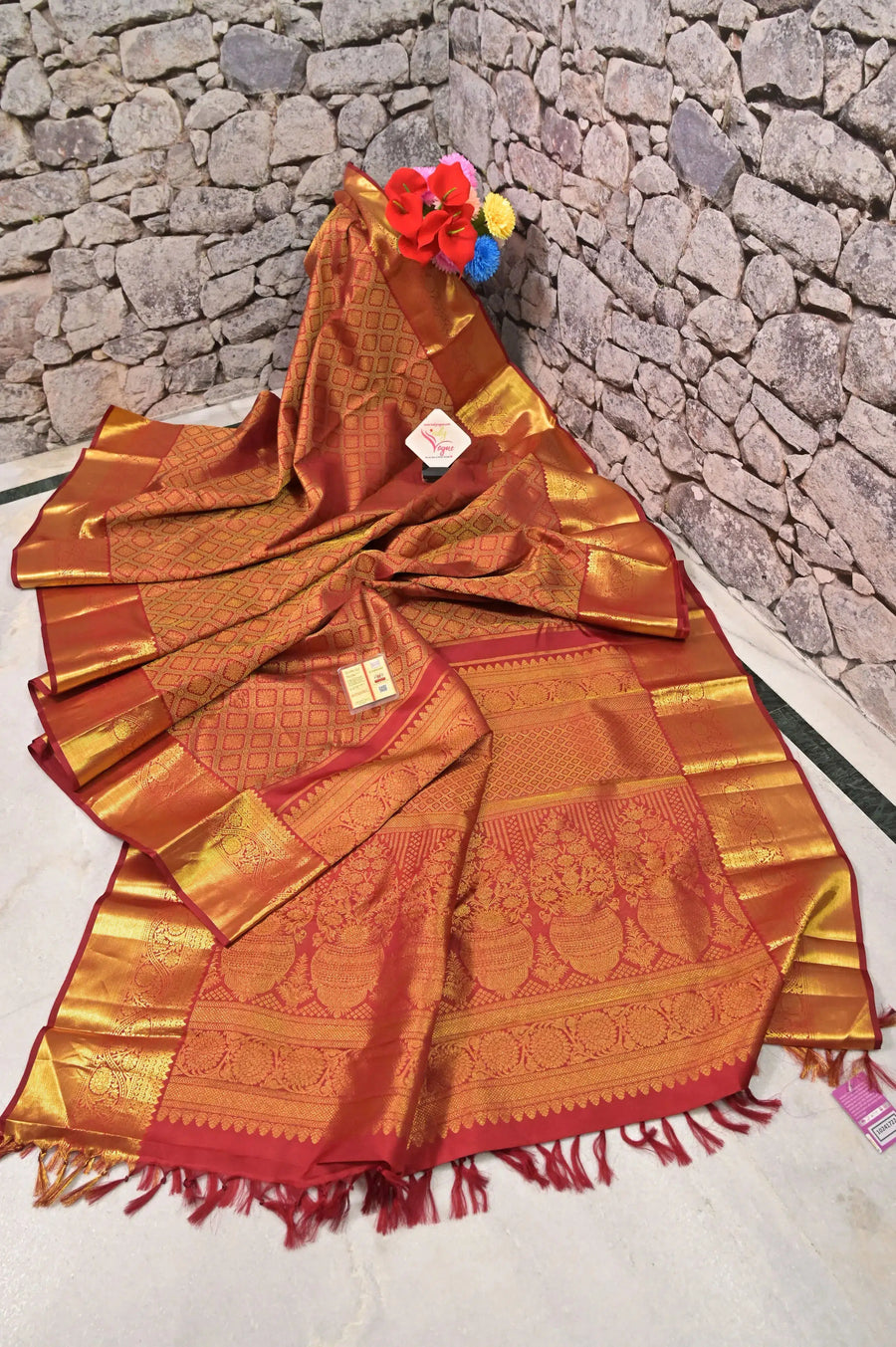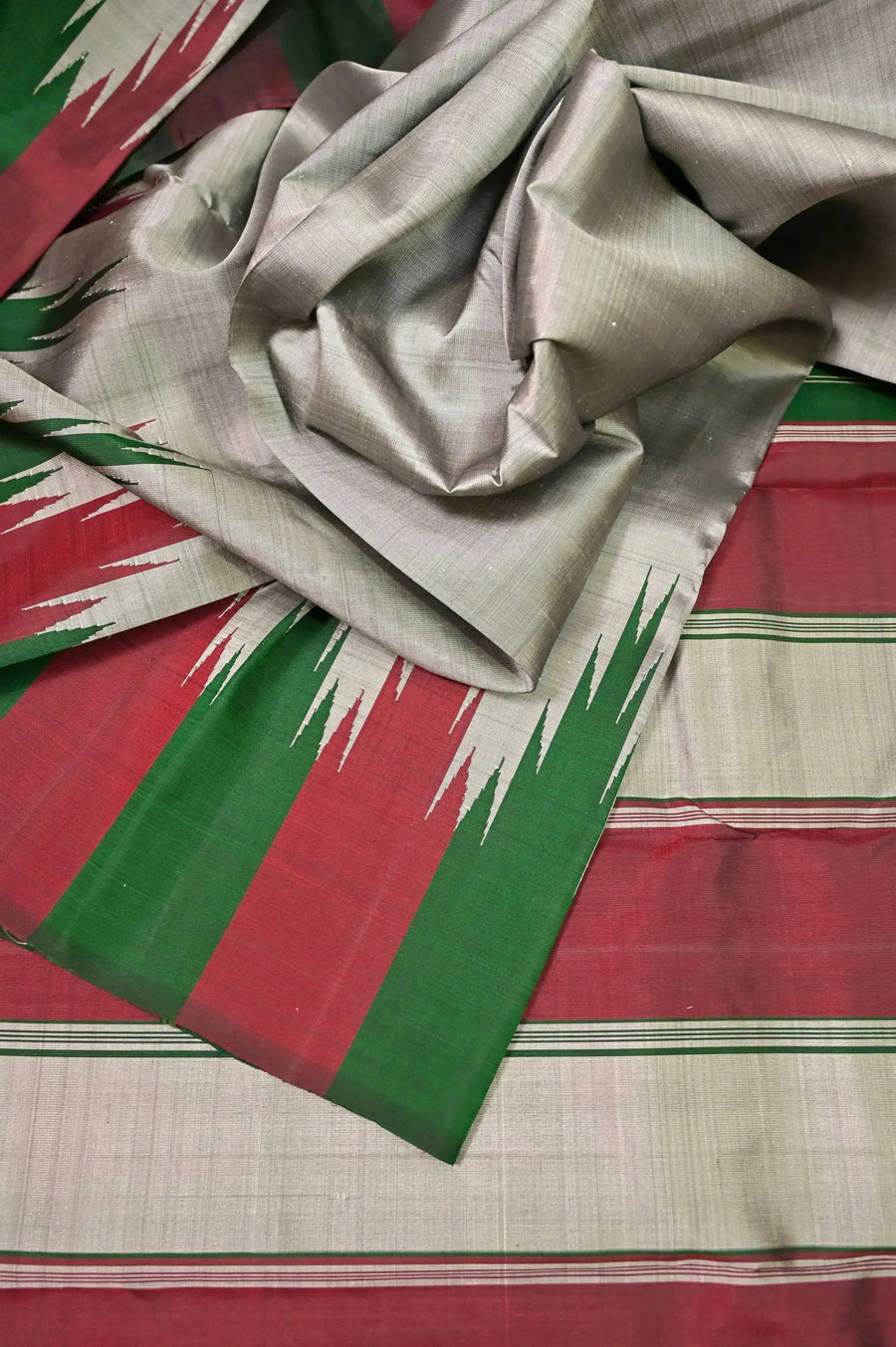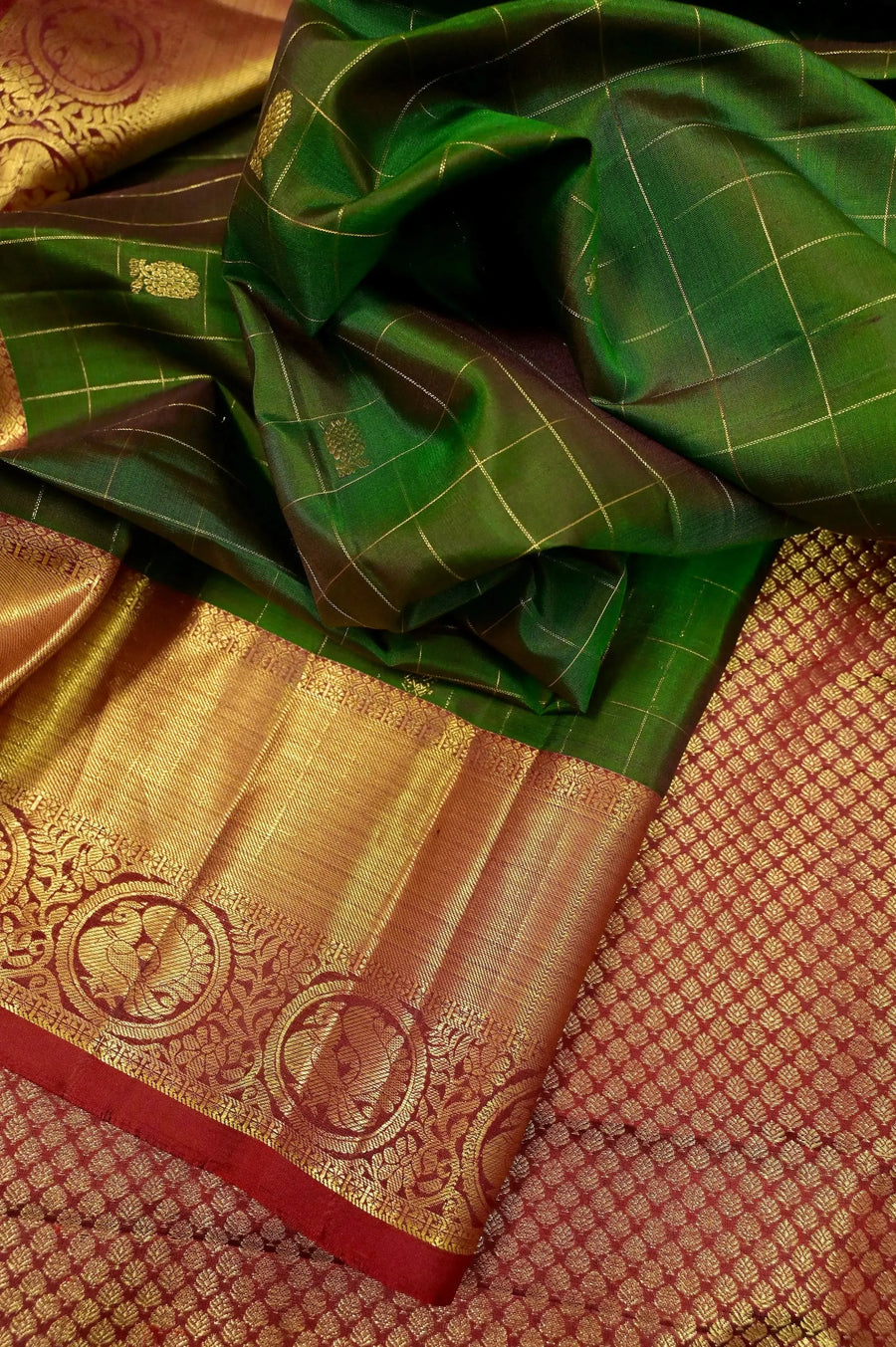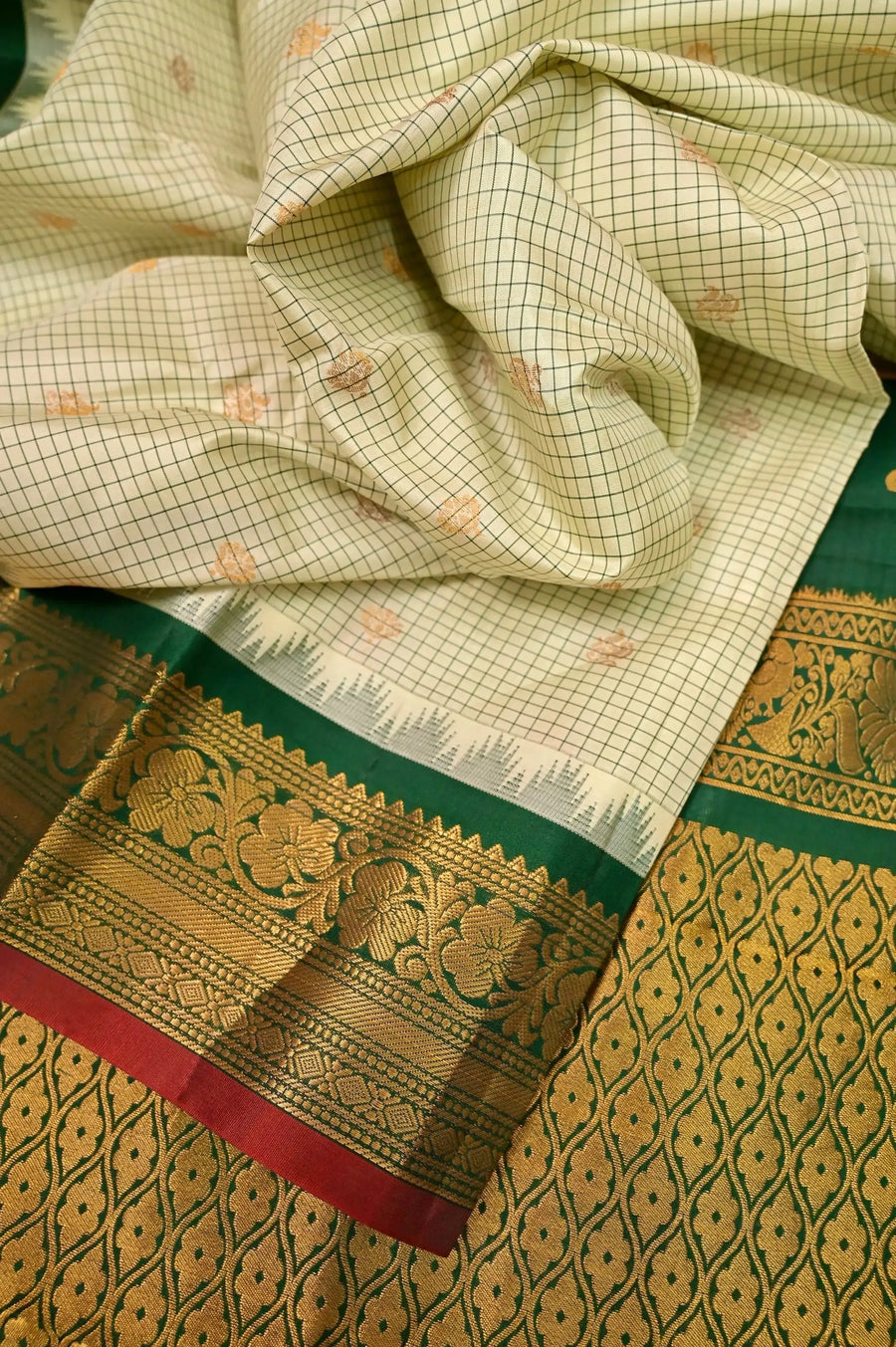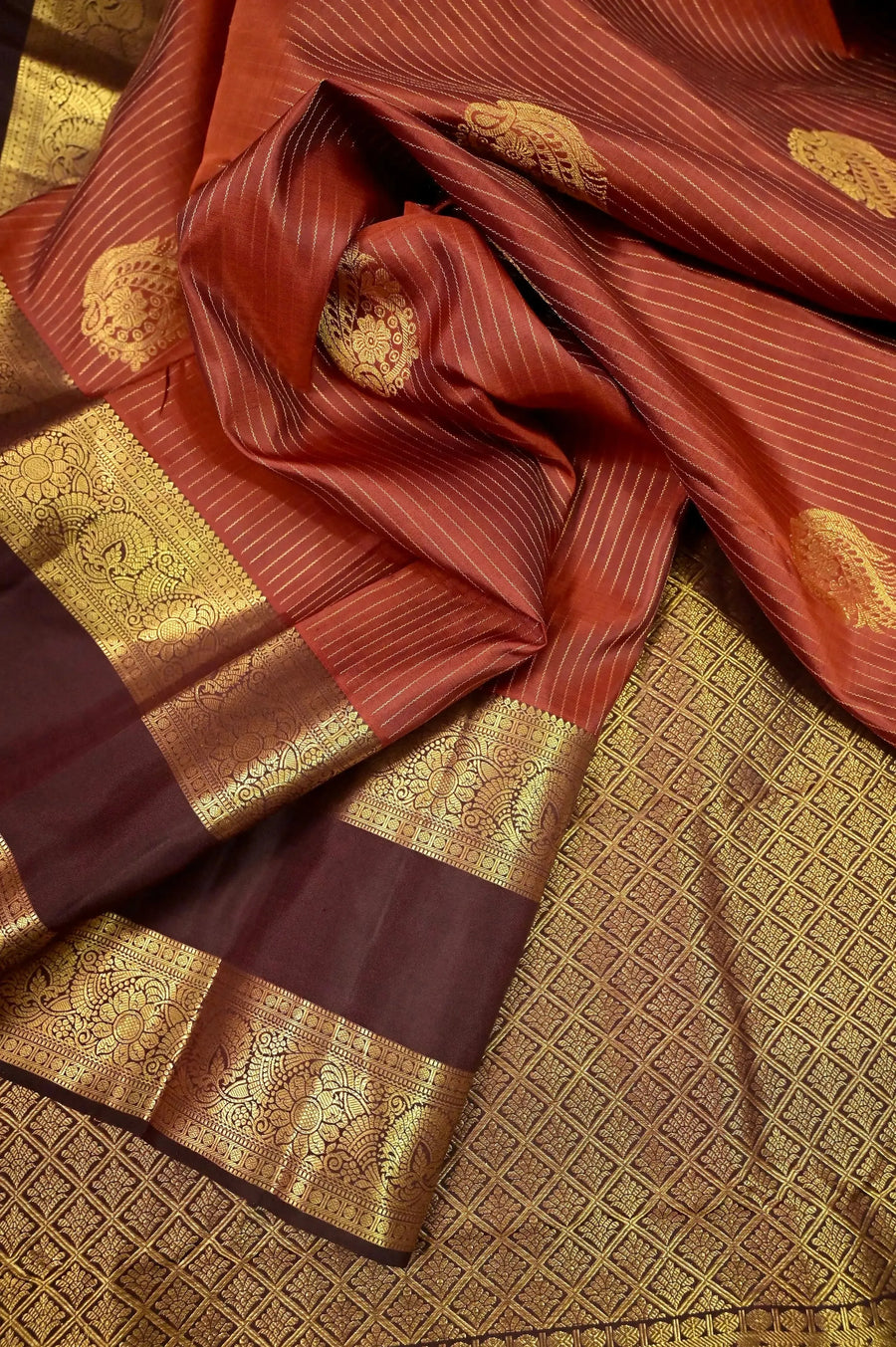How to Spot a Pure Kanjeevaram Silk Saree (And Avoid Getting Fooled!)
If you love sarees, you know there’s something special about a Kanjeevaram silk saree. These beauties aren’t just pieces of fabric—they’re a rich tradition wrapped in luxury and craftsmanship. But here’s the catch: the market is packed with imitations that look shiny and fancy but aren’t the real deal. So, how do you make sure you’re getting the genuine article?
Let’s dive into some easy ways to spot an authentic Kanjeevaram silk saree.
What Makes a Kanjeevaram Saree So Special?
First up, a quick backstory. Real Kanjeevaram silk sarees come from a little town called Kanchipuram in Tamil Nadu, India. They’re handwoven using top-quality mulberry silk and real zari (that’s the gold and silver thread). What’s cool is the weaving style called Korvai—this is where the body and the pallu (the fancy end of the saree) are woven separately and then carefully joined. It’s this craftsmanship that makes them so durable and beautiful.


